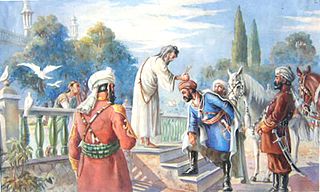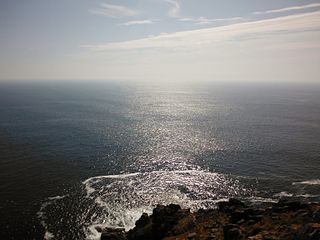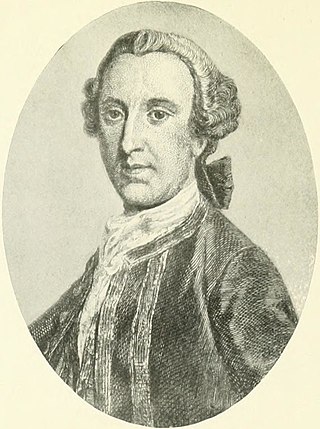| |||||
| Decades: | |||||
|---|---|---|---|---|---|
| See also: | |||||
Events from the year 1747 in Austria
| |||||
| Decades: | |||||
|---|---|---|---|---|---|
| See also: | |||||
Events from the year 1747 in Austria
| | This section needs expansion. You can help by adding to it. (October 2015) |

| | This section needs expansion. You can help by adding to it. (October 2015) |
| | This section needs expansion. You can help by adding to it. (October 2015) |

1747 (MDCCXLVII) was a common year starting on Sunday of the Gregorian calendar and a common year starting on Thursday of the Julian calendar, the 1747th year of the Common Era (CE) and Anno Domini (AD) designations, the 747th year of the 2nd millennium, the 47th year of the 18th century, and the 8th year of the 1740s decade. As of the start of 1747, the Gregorian calendar was 11 days ahead of the Julian calendar, which remained in localized use until 1923.

The War of the Austrian Succession was a European conflict fought between 1740 and 1748, primarily in Central Europe, the Austrian Netherlands, Italy, the Atlantic Ocean and Mediterranean Sea. Related conflicts include King George's War in North America, the War of Jenkins' Ear, the First Carnatic War, and the First and Second Silesian Wars.

Cape Finisterre is a rock-bound peninsula on the west coast of Galicia, Spain.

Edward Hawke, 1st Baron Hawke,, of Scarthingwell Hall in the parish of Saxton with Scarthingwell, near Tadcaster, Yorkshire, was a Royal Navy officer. As captain of the third-rate HMS Berwick, he took part in the Battle of Toulon in February 1744 during the War of the Austrian Succession. He also captured six ships of a French squadron in the Bay of Biscay in the Second Battle of Cape Finisterre in October 1747.

Admiral of the Fleet George Anson, 1st Baron Anson, was a British Royal Navy officer, politician and peer from the Anson family.

Admiral Sir Charles Saunders was a British Royal Navy officer. He commanded the fourth-rate HMS Gloucester and led her in action at the Second Battle of Cape Finisterre in October 1747 during the War of the Austrian Succession. After serving as Commander-in-Chief, Mediterranean Fleet, he was appointed Commander-in-Chief, English Channel in charge of the Western Squadron between October 1758 and May 1759). He took command of the fleet tasked with carrying James Wolfe to Quebec in January 1759 and consolidated the dead general's victory after the Battle of the Plains of Abraham in September 1759 by devoting great energy to keeping the British Army, now under the command of Colonel George Townshend, well supplied during the Seven Years' War. He later became Senior Naval Lord and then First Lord of the Admiralty.
Four naval battles fought between Britain and France near Cape Finisterre in northwest Spain are known as the Battle of Cape Finisterre:

The First Battle of Cape Finisterre was waged during the War of the Austrian Succession. It refers to the attack by 14 British ships of the line under Admiral George Anson against a French 30-ship convoy commanded by Admiral de la Jonquière. The French were attempting to protect their merchant ships by using warships with them. The British captured 4 ships of the line, 2 frigates, and 7 merchantmen, in a five-hour battle in the Atlantic Ocean off Cape Finisterre in northwest Spain. One French frigate, one French East India Company warship, and the other merchantmen escaped.

The second battle of Cape Finisterre was a naval encounter fought during the War of the Austrian Succession on 25 October 1747 (N.S.). A British fleet of fourteen ships of the line commanded by Rear-Admiral Edward Hawke intercepted a French convoy of 250 merchant ships, sailing from the Basque Roads in western France to the West Indies and protected by eight ships of the line commanded by Vice Admiral Henri-François des Herbiers.

Jacques-Pierre de Taffanel de la Jonquière, Marquis de la Jonquière was a French admiral who was appointed as Governor General of New France, where he served from 1 March 1749 until his death in 1752.

The Battle of Lauffeld, variously known as Lafelt, Laffeld, Lawfeld, Lawfeldt, Maastricht, or Val, took place on 2 July 1747, between Tongeren in modern Belgium, and the Dutch city of Maastricht. Part of the War of the Austrian Succession, a French army of 80,000 under Marshal Saxe defeated a Pragmatic Army of 120,000, led by the Duke of Cumberland.
Events from the year 1747 in Great Britain.

Admiral Sir Peircy Brett was a Royal Navy officer. As a junior officer he served on George Anson's voyage around the world and commanded the landing party which sacked and burned the town of Paita in November 1741. During the Jacobite rising Brett saw action on 9 July 1745, when as captain of the fourth-rate HMS Lion he exchanged fire with the French ships Elizabeth and the Du Teillay: the Du Teillay at the time was carrying Charles Edward Stuart to Scotland with supplies and funds to support his cause. Brett also commanded the third-rate HMS Yarmouth at the First Battle of Cape Finisterre in May 1747 during the War of the Austrian Succession. He commanded HMS Cambridge on the North America and West Indies Station during the Seven Years' War and later became Senior Naval Lord. He was also a Member of Parliament, representing the constituency of Queenborough from 1754 until 1774.

The Congress of Breda, also known as the Breda peace talks, were a series of bilateral negotiations between Great Britain and France, held in the Dutch city of Breda from 1746 to 1748. The discussions led to the agreement of terms that later became the basis of the 1748 Treaty of Aix-la-Chapelle.

Thomas Grenville was an officer of the Royal Navy and Member of Parliament for Bridport. He saw service during the War of the Austrian Succession.

The voyage of the Glorioso involved four naval engagements fought in 1747 during the War of the Austrian Succession between the Spanish 70-gun ship of the line Glorioso and several British squadrons of ships of the line and frigates which tried to capture it. The Glorioso, carrying four million silver dollars from the Americas, was able to repel two British attacks off the Azores and Cape Finisterre, landing her cargo at the port of Corcubión, Spain.

HMS Monarch was originally the 74-gun ship of the line Monarque of the French Navy launched in March 1747. Captured on 14 October 1747, she was taken into Royal Navy service as the third rate HMS Monarch.

Henri-François des Herbiers, Marquis de L'Estenduère, was born in Angers around 1682 and died in Rochefort in March 1750. He was a Navy officer and aristocrat in France. Coming from a noble family from Poitou, he began his navigational training under the direction of his uncle, and began his naval career at an early age in the Marine royale. He distinguished himself for the first time during the War of the Spanish Succession near Vélez-Málaga and then at the Battle of Marbella, before fighting as a privateer. During the 1720s, he undertook many voyages to New France and drew many marine maps of the St. Lawrence River. He took part in the wars of the Polish Succession, and the War of the Spanish Succession.

Admiral Sir Robert Harland, 1st Baronet was a Royal Navy officer. He commanded HMS Tilbury at the Second Battle of Cape Finisterre in October 1747 during the War of the Austrian Succession and commanded HMS Princess Louisa at the Battle of Lagos in August 1759 during the Seven Years' War. He went on to be Commander-in-Chief of the East Indies Station and then First Naval Lord.
HMS Weazel or Weazle was a 16-gun ship-sloop of the Royal Navy, in active service during the War of the Austrian Succession, the Seven Years' War and the American Revolutionary War. Launched in 1745, she remained in British service until 1779 and captured a total of 11 enemy vessels. She was also present, but not actively engaged, at the Second Battle of Cape Finisterre in 1747.
![]() Media related to 1747 in Austria at Wikimedia Commons
Media related to 1747 in Austria at Wikimedia Commons